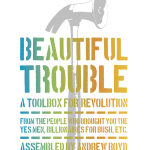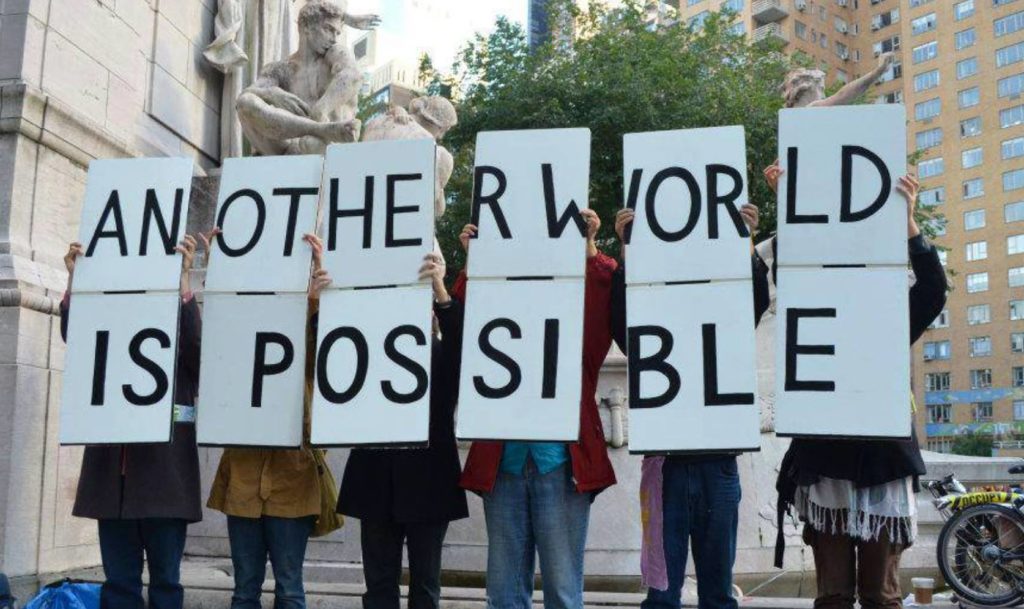 My heart was happy this weekend as I watched photos and videos of millions of marchers from all over the country and the world. It is deeply satisfying to witness women and those who love them taking to the streets marching for human rights, women’s rights, clean water, air, LGBTQ rights and other civil rights which are now under threat under the new President.
My heart was happy this weekend as I watched photos and videos of millions of marchers from all over the country and the world. It is deeply satisfying to witness women and those who love them taking to the streets marching for human rights, women’s rights, clean water, air, LGBTQ rights and other civil rights which are now under threat under the new President.
Marches are wonderful feel good events. I have fond memories of many marches in DC working to stop the KXL pipeline. The big climate march in NYC a few years back was huge fun along with the Flood Wall Street event the following day.
What’s next? How do we transform all that marching energy into meaningful positive change? I’ve come up with a 3 step plan of action for marchers and those who might be new to the concept of “resistance”
1. Learn more about Non-violence
Marching is just one tactic of non-violent resistance. There are many more ways to resist, our history is filled with examples. Find a group offering trainings in de-escalation, non-violent communication or NVDA (non-violent direct action). Non-violence and de-esacalation are important skills to have for communicating with loved ones and neighbors who might not see eye to eye. Good resources include:
The Center for Non-violent Communication
2. Learn more about tactics and strategy that are utilized in peaceful protests.
 Beautiful Trouble is one of my favorite books which is also an online resource filled with case studies, theory and key principles.
Beautiful Trouble is one of my favorite books which is also an online resource filled with case studies, theory and key principles.
The Dandelion Insurrection is a novel written by Rivera Sun that tells the story of making change through non-violent action. She’s also created a Study Guide to help you dig deeper on historical examples of non violent struggle and learn more about these tools.
Bidder 70 is a movie that tells the story of Tim DeChristopher, a college student who committed an act of civil disobedience which helped to build the growing climate justice movement of today.
The Yes Men are Revolting is a fun, action packed movie about two playful activists traveling the world staging outrageous and hilarious hoaxes to draw international attention to corporate crimes against humanity.
 3. Create a daily routine. Just like building a strong healthy body, to build a strong resistance movement, we’ve all got to do some work every day. Phone calls are part of this new daily routine of resistance. We’ve got to keep our eyes on our elected officials. We must follow their votes closely, just like sports statistics on your favorite football team. Know the players, locally, and on state and national levels. Find the phone numbers for your senators, your congressperson, your state reps. And even your town board members. Put these numbers in your phone, call them often and let them know you’re paying attention. These calls only take a few minutes each day. They are far more impactful than petitions and emails. It feels empowering to call and let them know where you stand. These folks work for you, not for the corporate lobbyists who fund their campaigns. Use your voice and be heard! Every darn day.
3. Create a daily routine. Just like building a strong healthy body, to build a strong resistance movement, we’ve all got to do some work every day. Phone calls are part of this new daily routine of resistance. We’ve got to keep our eyes on our elected officials. We must follow their votes closely, just like sports statistics on your favorite football team. Know the players, locally, and on state and national levels. Find the phone numbers for your senators, your congressperson, your state reps. And even your town board members. Put these numbers in your phone, call them often and let them know you’re paying attention. These calls only take a few minutes each day. They are far more impactful than petitions and emails. It feels empowering to call and let them know where you stand. These folks work for you, not for the corporate lobbyists who fund their campaigns. Use your voice and be heard! Every darn day.
This weekend’s march was just the beginning. If we stay engaged, and build our skills, the sky is the limit as to what we can accomplish.



Susan, Thanks so much for this “what to do now” work. I will share it with my colleagues in activist circles and those somewhat new to the issues but who participated in the DC and NYC marches yesterday.
Where, locally, do we see the Trumpist agendas operating? Is local action called for now to stand against Astorino’s Guns show veto? Are there mini Trumpets sounding in our local governments. Are Social Studies teachers or teachers in general exhibiting a new fear of expressing themselves? What evidences of Islamopobia, Xenophobia, racism, sexism and Anti-Semitism in our neighborhoods.
All great questions, Andrew! Let’s keep our eyes and ears open to answer them.